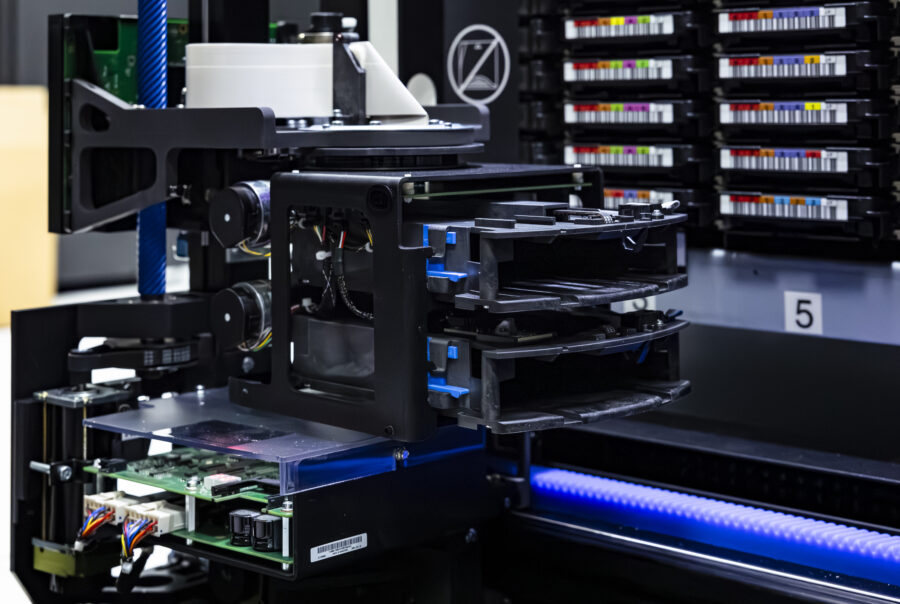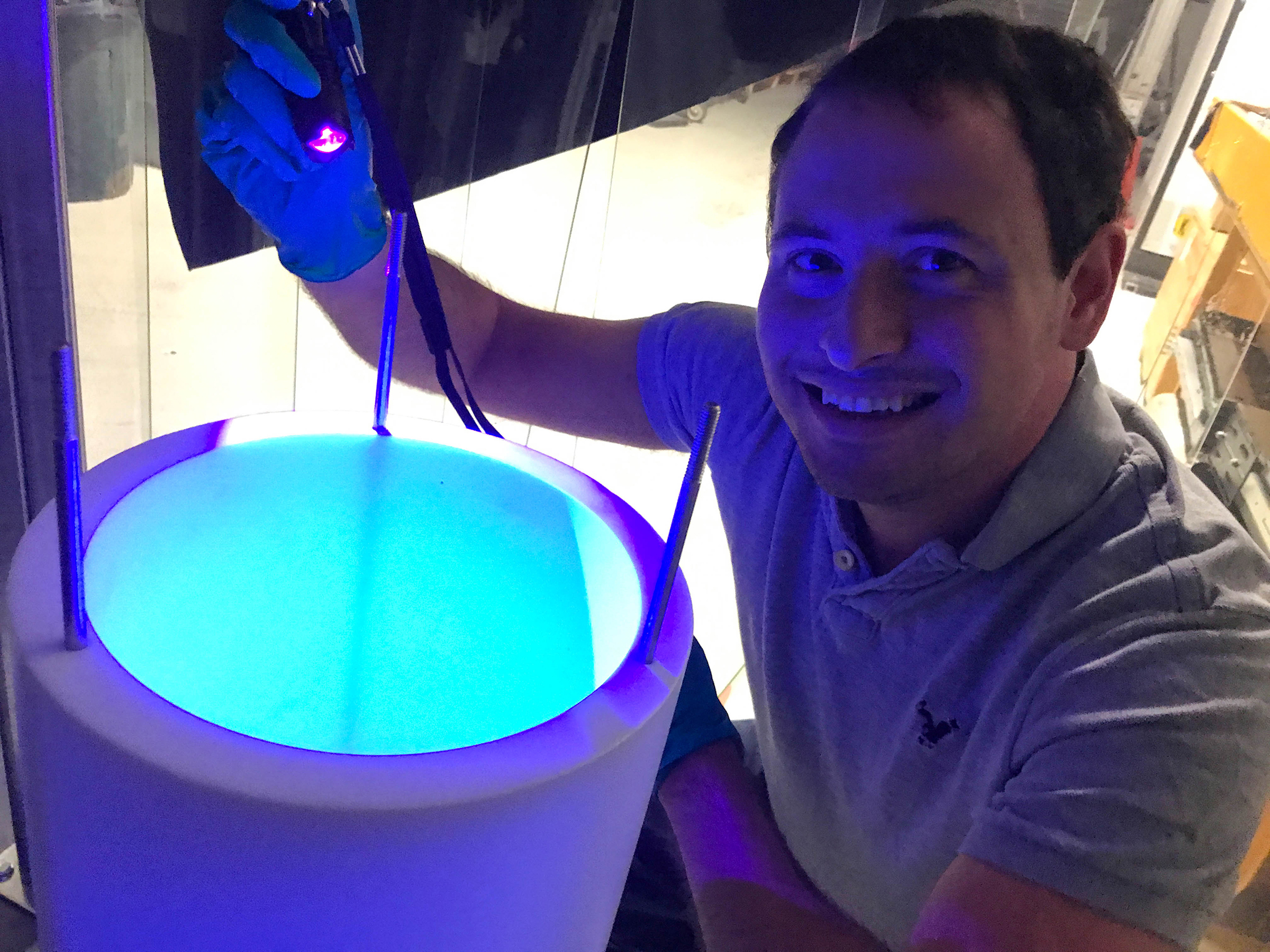The High-Performance Storage System (HPSS) is the archival mass-storage resource at ORNL and consists of robotic tape and disk storage components, Linux servers, and associated software. Incoming data is written to disk and later migrated to tape for long-term archival. As storage, network, and computing technologies continue to change, ORNL’s storage system evolves to take advantage of new equipment that is both more capable and more cost-effective.
HPSS Support
The System User Guide is the definitive source of information about HPSS and details everything from using Globus for data transfers to executing HSI and HPSS Tape Archiver (HTAR) commands. Please direct questions about HPSS and its usage to the OLCF User Assistance Center by emailing [email protected].
System Specifications
Tape
- Tape library: 19-frame Spectra® Tfinity® ExaScale
- Cartridge capacity: Total capacity of 13,221 IBM 3592 JD tapes, 11704 slots currently in use
- Tape storage: 132 PB
- Model of tape drives: IBM® TS1155
- Individual drive bandwidth: 360 MBps
Disk
- Front-end disk cache: 3 DDN SFA14KX storage subsystems, 1 DDN SFA400NV storage subsystem
- Disk storage: 23.3 PB
- Bandwidth at the block level: 50 GBps
Access
HPSS can be accessed by one of several dedicated data transfer nodes (DTNs) for Globus or shared DTNs for the hierarchical storage interface (HSI), both using 40-gigabit Ethernet connections.
HPSS History
ORNL’s work in mass storage began in the early 1990s to support the Atmospheric Radiation Measurement project and to provide storage for simulation results generated on the NCCS’s Paragon supercomputers. To support those projects, ORNL acquired and ran the NSL UniTree storage management product.
In 1993, a follow-on to NSL UniTree known as HPSS was being designed by IBM and a collaboration of Department of Energy (DOE) and national laboratories (Sandia, Lawrence Livermore, and Los Alamos National Laboratories). ORNL joined that collaboration and took on the responsibility for the storage system management (SSM) portion of the product, for which the ORNL HPSS development team continues to be responsible.
ORNL continued with NSL UniTree production use until 1997, at which time the conversion to HPSS was completed. In 1997, HPSS won an R&D 100 Award, based on the work of five DOE labs—Oak Ridge, Lawrence Berkeley, Lawrence Livermore, Los Alamos, and Sandia National Laboratories—and IBM Houston Global Services.
In 1998, the OLCF was producing 300 GB of data per month and providing 1 TB of disk storage space. More than 20 years later, the OLCF archives petabytes (PB) of data per month and provides 23.3 PB of disk storage space and 132 PB of tape storage space.





